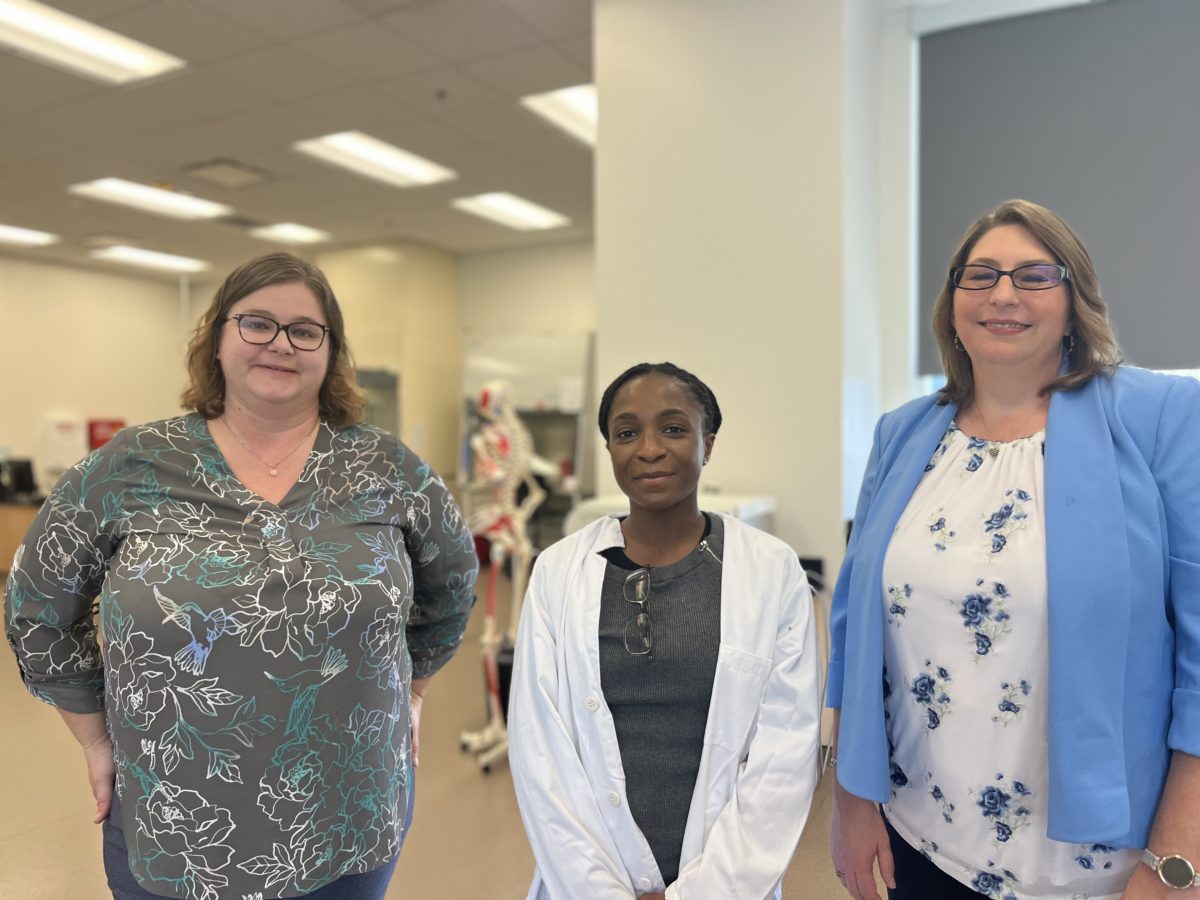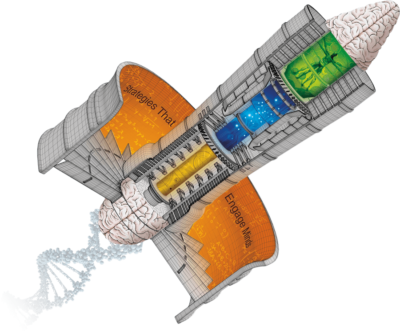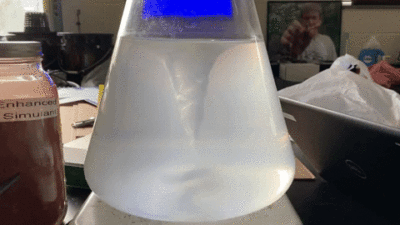

Share this story
- "The heart of START is really a success and retention tool to increase the diversity of STEM professionals," the START program director said.
- Hispanic or Latino workers make up 18% of the U.S. workforce but represent 14% of STEM workers. Similarly, Black workers make up 12% of the U.S. working population but represent only 9% of STEM workers.
|
|
When Wake Technical Community College launched its STEM Academic Research and Training (START) program in 2016, it aimed to increase diversity in the field through undergraduate research and mentoring opportunities.
“The heart of START is really a success and retention tool to increase the diversity of STEM professionals,” said Jackie Swanik, Wake Tech’s associate dean of math and sciences and START program director. “The idea is if we can get students involved in these projects, doing the work of a STEM professional now, when they hit potential roadblocks, they’ll be more engaged and be able to persist and be successful.”
Now, after receiving a $1.4 million National Science Foundation grant in 2021, START is a 60-hour program that offers students paid internships through Wake Tech.
Through the five-year grant, 50 students each semester are paid $15 an hour during the program. The program includes 40 hours of research and 15 hours of research training. Of that, 10 hours are online professional development and five hours are “community building.”
“We were able to take it from like an undergraduate research experience into a true program, so now it is a paid internship through Wake Tech,” Swanik said, regarding the grant. “Students get the skills and the experience of having to do all that (employment) paperwork and what it looks like to be a professional. That wasn’t really a goal of the program, but some of our students really need that experience to help them to feel confidence as they look for other employment.”
‘Build the confidence’
The STEM workforce includes jobs like computer scientists, mathematicians, engineers, architects, and health care practitioners, among many others.
Generally, STEM jobs pay well, according to U.S. Bureau of Labor statistics, and they’re in high demand. Helping more students access the STEM field is important for meeting both equity and workforce needs, Swanik said.
Justina Uwa is in her third semester in the START program and is a program ambassador.
Uwa is studying to be a nurse at Wake Tech. Lifetime earnings for nursing students at Wake Tech increase on average by $932,900 per completer, according to a recent economic impact study. On average, Wake Tech students gain $3.20 in lifetime earnings for every dollar spent on their education.
For Uwa, the START program has exposed her to a variety of sciences while always connecting her research back to nursing.
“That kind of thing is really important to me,” she said. “I like that I’m able to meet mentors that are in the science space, and I’m able to connect with them and learn more about research and use that in my future as a nurse.”
Students accepted to the START program choose from a variety of projects led by Wake Tech faculty mentors. Third-party evaluators select participants by randomizing eligible applicants through a numbering system. Wake Tech then selects the top 50 of 125-155 applicants as START interns.
In addition to being enrolled at Wake Tech, students should also be at least 18, have interest in a STEM-related career, and plan to transfer to a four-year university. Students who applied previously but were not selected for the program cannot apply.
The college is paying to assess the program by comparing START interns with a “control group” of applicants who were not selected. The idea there, Swanik said, is to see if START helps improve student outcomes by comparing their graduation and transfer success with other highly motivated students.
There is no grade-point average requirement for the program.
“We are actually looking for those struggling students academically,” Swanik said. “Because the thought is if we can get them in, we can get them engaged. Then they build the confidence that they can do this and that they can be STEM professionals, then that confidence actually goes back into the classroom and their grades improve.”
‘YOU belong in STEM’
In recent years, educators and advocates across the country have pushed to diversify the STEM field.
In October, the U.S. Department of Education launched a “YOU Belong in STEM” initiative, to “to implement and scale equitable and high-quality STEM education for all young people from Pre-K to higher education,” according to the department’s website.
The federal initiative will focus on improving student outcomes by promoting a sense of belonging in STEM. The education department said it will provide guidance and technical assistance to elevate STEM curriculum, convene STEM partners, and elevate evidence-based practices for belonging in STEM.
“With the YOU Belong in STEM initiative, we are helping districts and schools redesign systems and learning spaces to ensure students get the well-rounded education they need,” said U.S. Senate Deputy Secretary Cindy Marten. “We are also challenging narratives about who belongs in STEM learning and careers that, over generations, left out millions of girls and young women, students of color, students living in poverty, Native American and Alaska Native students, students with disabilities, and other marginalized students. Every student, no matter their background or zip code can meet and exceed their unique potential to learn and thrive in STEM education.”
STEM employment has grown 79% since 1990, according to a 2018 Pew Research report, but diversity in the STEM workforce varies widely across jobs. Based on U.S. Census Bureau data, women make up 34% of the STEM workforce compared to 52% of the non-STEM workforce.
Hispanic or Latino workers make up 18% of the U.S. workforce, according to the National Science Foundation (NSF), but represent 14% of STEM workers. Similarly, Black or African American workers make up 12% of the U.S. working population but represent only 9% of STEM workers. That discrepancy is greater among workers without a bachelor’s degree, according to NSF data.
Research suggests underrepresented students face a variety of obstacles in pursuing or studying STEM. Addressing things like self confidence, sense of belongingness, and social and academic support is crucial to diversity efforts, Swanik said.
“It’s trying to meet the needs of the students where they are,” she said.
Building ‘transfer capital’
At Wake Tech, the START applicant pool tracks closely with the overall demographics of the college, Swanik said. Wake Tech wants to continue to diversify START applicants, particularly because they select students randomly.
The program is also using grant funding to study transfer rates of its participants. Swanik hopes to continue to form partnerships with four-year institutions. Already, N.C. State, UNC Chapel Hill, and N.C. A&T State University partner with START.
Through such partnerships, Wake Tech hopes to build “transfer capital” for START interns, Swanik said.
“We know that academically we prepare them very well. But when we talk to them, they say that it feels like they have to start all over again. If we can get them connected and build that transfer capital – so they know where to park, they know where to get something to eat, they know somebody to ask a question – that they will be more successful in actually transferring, so we can continue this pipeline and this diversity of STEM professionals.”
— Jackie Swanik, Wake Tech Associate Dean of Math & Sciences
Working in the lab gaining hands-on experience is the best part of the program, Uwa said of her internship experience. That experience will help her succeed at a four-year university one day, she said, and in her career as a nurse.
“Sometimes I will mess up or make errors, but I will be able to talk to my mentor and see what we can improve on,” she said.
One of the things Swanik loves about science, she said, is that “we fail more than we succeed.” She aims to help START interns connect that reality with their lives – viewing mistakes as an opportunity to grow instead of as automatic failure.
“One of the things we’re really trying to do with our student interns is increase their grit and persistence,” added Kimberly Fishback, department head of life sciences, math, and sciences at Wake Tech. “We talk a little bit about impostor syndrome in training, to kind of say some of these feelings are normal. So I think building that confidence with our student interns is something that they ended up taking away as well.”
That increased confidence is what Swanik is most proud of – that students like Uwa not only see themselves in STEM but actually have experience in it.
Moving forward, Swanik said she hopes to continue expanding the START program’s community and four-year partnerships to further build the hands-on experience it offers.
“Understanding where you thrive allows students to see themselves as that smart individual that they may not have seen beforehand,” she said. “It’s helping not only students and mentors, but a lot of our four-year institutions to understand the value of our students and the value (of) having a diverse population in the STEM workforce.”
You can learn more about the START program here.





